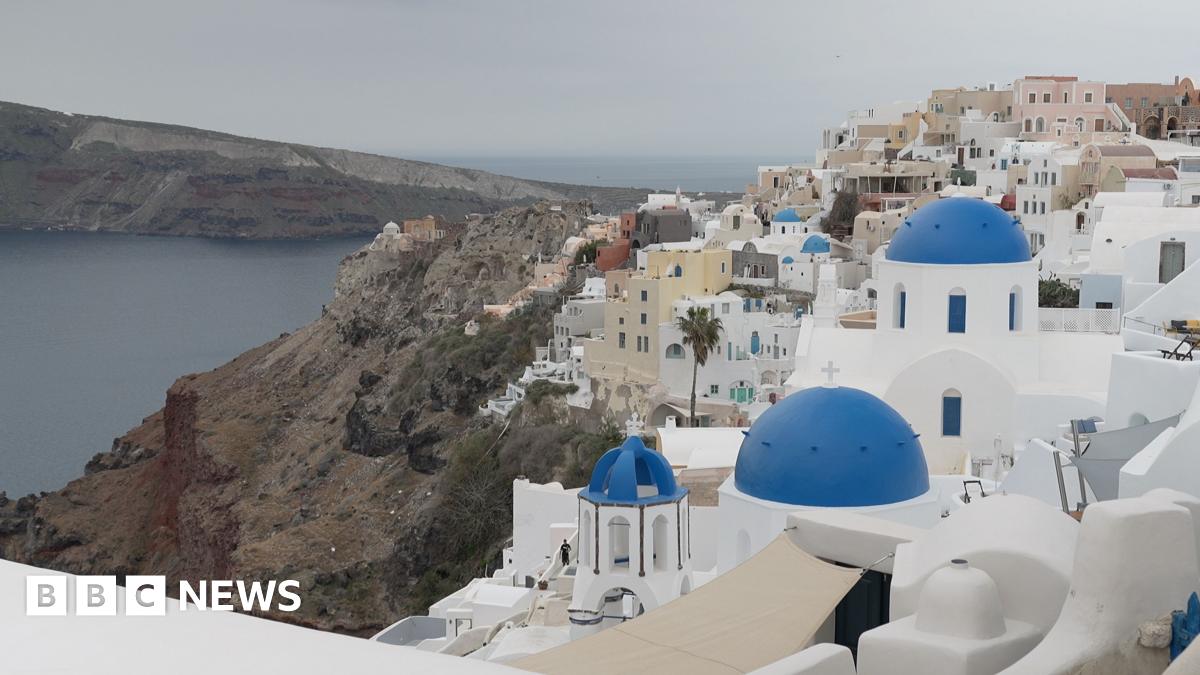Predicting Santorini's Next Volcanic Event: Analyzing Geological Data

Welcome to your ultimate source for breaking news, trending updates, and in-depth stories from around the world. Whether it's politics, technology, entertainment, sports, or lifestyle, we bring you real-time updates that keep you informed and ahead of the curve.
Our team works tirelessly to ensure you never miss a moment. From the latest developments in global events to the most talked-about topics on social media, our news platform is designed to deliver accurate and timely information, all in one place.
Stay in the know and join thousands of readers who trust us for reliable, up-to-date content. Explore our expertly curated articles and dive deeper into the stories that matter to you. Visit Best Website now and be part of the conversation. Don't miss out on the headlines that shape our world!
Table of Contents
Predicting Santorini's Next Volcanic Event: Analyzing Geological Data
Santorini, the breathtaking Greek island synonymous with stunning sunsets and white-washed villages, harbors a volatile secret: a powerful volcano slumbering beneath its picturesque landscape. The island's dramatic caldera, a testament to a cataclysmic eruption thousands of years ago, continues to fascinate and worry scientists who are dedicated to understanding and predicting its next awakening. Recent advancements in geological data analysis are offering unprecedented insights, bringing us closer to understanding the timing and potential impact of future eruptions.
Santorini's Explosive History: A Timeline of Volcanic Activity
The Minoan eruption, around 1600 BCE, is arguably Santorini's most famous event. This colossal eruption, one of the largest in recorded history, left behind the caldera we see today and significantly impacted the Minoan civilization on Crete. However, Santorini's volcanic history extends far beyond this singular event. Numerous smaller eruptions have occurred since, with the most recent significant activity in 1950. Understanding this complex history is crucial for predicting future events. Geological records, including tephra analysis (the study of volcanic ash layers), provide a detailed chronology of past eruptions, offering valuable clues about the volcano's eruptive style and frequency.
Modern Monitoring Techniques: Unveiling Santorini's Secrets
Modern technology plays a vital role in monitoring Santorini's volcanic activity. A network of sophisticated sensors constantly monitors ground deformation, gas emissions, and seismic activity. These measurements, combined with advanced GPS technology, allow scientists to detect subtle changes that could signal an impending eruption. For example, ground deformation, often manifested as swelling or sinking of the ground, can indicate magma movement beneath the surface. Similarly, increases in gas emissions, particularly sulfur dioxide, can be a key indicator of rising magma pressure.
Analyzing Geological Data: Predictive Modeling and Risk Assessment
The sheer volume of data collected necessitates advanced analytical techniques. Scientists employ sophisticated computer models to integrate various datasets, enabling them to create predictive models of future volcanic activity. These models consider various factors including the frequency and intensity of past eruptions, current geological conditions, and the rate of magma accumulation. While predicting the precise timing of an eruption remains a challenge, these models provide valuable insights into the probability of an eruption within a given timeframe and help assess the potential risks associated with such an event.
Challenges and Future Directions: Improving Eruption Forecasting
Despite significant advancements, accurately predicting volcanic eruptions remains a complex scientific challenge. The inherent variability in volcanic systems and the limitations of current monitoring techniques make precise predictions difficult. However, ongoing research focuses on improving data analysis methods, developing more sophisticated predictive models, and enhancing monitoring networks. This involves exploring new technologies, such as advanced satellite imagery and machine learning algorithms, to refine our understanding of volcanic processes and improve forecasting capabilities.
Conclusion: Vigilance and Preparedness
Santorini's volcanic future remains uncertain, but ongoing scientific research is crucial for mitigating potential risks. By combining historical data with cutting-edge monitoring technologies and sophisticated analytical techniques, scientists strive to improve eruption forecasting, enabling effective emergency preparedness and ultimately safeguarding the lives and livelihoods of those living on and visiting this spectacular, yet potentially hazardous, island. Continued investment in volcanic research and international collaboration is vital for ensuring the safety and well-being of communities living in the shadow of active volcanoes worldwide. Staying informed about volcanic risk and heeding any official warnings are crucial steps in ensuring personal safety.

Thank you for visiting our website, your trusted source for the latest updates and in-depth coverage on Predicting Santorini's Next Volcanic Event: Analyzing Geological Data. We're committed to keeping you informed with timely and accurate information to meet your curiosity and needs.
If you have any questions, suggestions, or feedback, we'd love to hear from you. Your insights are valuable to us and help us improve to serve you better. Feel free to reach out through our contact page.
Don't forget to bookmark our website and check back regularly for the latest headlines and trending topics. See you next time, and thank you for being part of our growing community!
Featured Posts
-
 The Trump Presidency Policies Controversies And Aftermath
Apr 22, 2025
The Trump Presidency Policies Controversies And Aftermath
Apr 22, 2025 -
 El Legado De Elon Musk Implicaciones Para El Futuro De La Humanidad
Apr 22, 2025
El Legado De Elon Musk Implicaciones Para El Futuro De La Humanidad
Apr 22, 2025 -
 Unlock Homeownership 5 Mortgage Options For First Time Buyers
Apr 22, 2025
Unlock Homeownership 5 Mortgage Options For First Time Buyers
Apr 22, 2025 -
 Donald Trumps Impact On American Politics An Analysis
Apr 22, 2025
Donald Trumps Impact On American Politics An Analysis
Apr 22, 2025 -
 Thousands March Against Trump A Growing Movement Of Dissent
Apr 22, 2025
Thousands March Against Trump A Growing Movement Of Dissent
Apr 22, 2025
